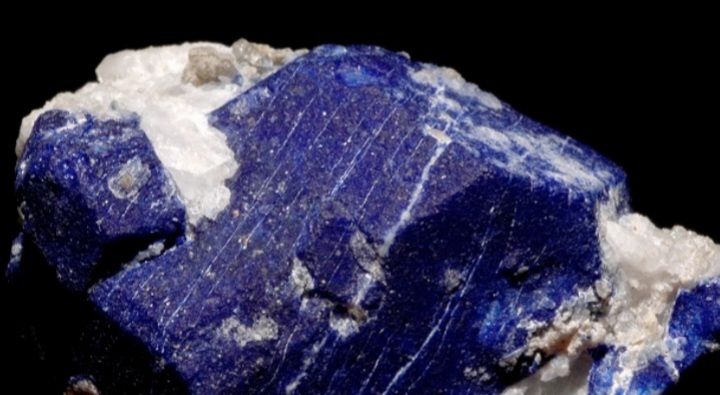Earth Treasures: Lazurite

By Chisom Ibemere
Lazurite is also known as lapis lazuli and has been used as a gemstone and ornamental material over the years. It was highly prized in ancient Egypt, Greece, and Rome and was used in the making of jewellery, decorative objects, and even pigment for painting.
The name is gotten from the Latin word “lapis” meaning “stone”, and from the Persian word “lazhward” meaning “blue”. It is found in metamorphic rocks, mostly in marble, and is commonly associated with other minerals such as pyrite, calcite, and sodalite.
The primary sources of Lazurite are Afghanistan, Russia, and Chile, although it can also be found in smaller quantities in some other locations globally.
Lazurite is a deep blue to violet-blue mineral that is mostly used as a gemstone. It has a Mohs hardness of 5.5-6, which makes it relatively soft compared to other gemstones like diamond. It belongs to the feldspathoid group of minerals. It has a specific gravity of 2.4-2.9 and a refractive index of 1.50-1.55.
Lazurite has many applications. It is most commonly used as a gemstone, with its deep blue colour and golden pyrite inclusions making it very popular in jewellery. It is also used in sculpture and decorative objects, as well as in some religious artefacts.
Lazurite has been used since ancient times as a pigment in painting, with the most famous examples being the blue pigments used in the works of Renaissance artists like Vermeer and Titian.
Lazurite is highly valued as a gemstone which depends on the quality, size, and origin of the stone. Highest quality stones are typically found in Afghanistan, and these can command prices of several thousand dollars per carat. Recently, there has been an increasing demand for Lazurite from collectors and investors, as well as from the jewellery industry.
